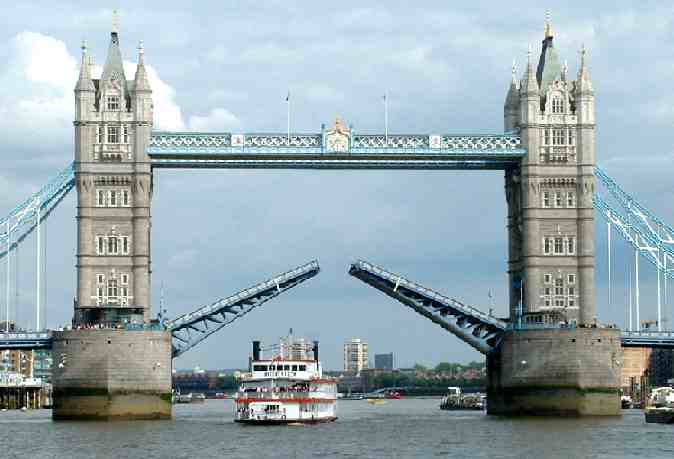London Bridge in the world today is not the same London Bridge that crossed the Thames at the time it was first constructed. Peter, a priest and chaplain of St. Mary's of Colechurch, started out the groundwork of the original bridge in 1176 to restore a wooden bridge (exorbitant to maintain and frequently burnt down) that had first been engineered by the Romans. The original London Bridge consisted of nineteen pointed arches, each of them with a gap averaging 7 meters, and constructed on 6-meter-wide piers. A twentieth opening in the bridge was spanned by a wooden drawbridge. With the construction of this bridge, an unusual effect was noticed - the tide roared through the narrow arches every day with terrific force. As a matter of fact, it was so massively impacted that it generated temporary 5-foot-high cataracts every day as it went in and out. A new sport based on this nifty effect was "shooting the bridge" - sliding through the arches in a small boat when the tide was turning.


Peter of Colechurch passed away in 1205, and his undertaking was concluded by three other London locals by 1209. The bridge, already rather confined for its function, became even narrower (about 4 meters wide) when stores and homes were built along both sides of the roadway right on the bridge itself. By 1358, 138 places of business were recorded in the tax rolls. And like most other older London buildings, the stores were built so that the upper floors stretched over the roadway. At last, the bridge became more like a long tunnel lined with shops, through which travelers and other people flowed. One can only imagine the smell, with the sheltered road, no real drainage, and lots of horses and people ! The houses were built so that they overhung the water as well as the roadway, and were anchored by tying them together across the street with arches of robust timber. In 1580, water mills added to the general chaos of the bridge.
But having so much on the bridge itself became threatening to dwellers and travelers. Only three years after it was first accomplished, a major fire affected its buildings, killing perhaps 3000 people when it jumped from one end of the bridge to the other, trapping firefighting crowds between the flames. The houses were quickly rebuilt - and in 1282 five of the bridge arches collapsed with the weight of winter ice. But they too were rebuilt along with their requisite buildings, and the bridge continued as London's sole crossing of the Thames until 1750, when Westminster Bridge opened.
At about this time, the designer of Westminster Bridge was hired to repair and renovate London Bridge. Redesign and repair was deemed necessary by the narrowness of the road, the huge supports of the bridge, which took up about a quarter of the river's width , and by the dangerous sport of shooting the bridge and other health hazards posed by the bridge. By 1762 the character of the bridge was changed. All the houses were gone, the roadway was 14 meters wide, and the two central arches replaced by one great arch, allowing much more convenient passage for larger boats.
However, this central arch proved problematic to sustain, and in the early 1800s another bridge was built a few meters away. The original London Bridge was demolished by 1832. The new bridge was called Rennie's Bridge. Designed by George Rennie and constructed by John Rennie, it was composed of only five arches, with the central span reaching 46 meters. Rennie's London Bridge had a very unusual ending. It lasted less than 140 years. Between 1968 and 1971, it was dismantled and shipped across the Atlantic to the United States, where it had been rebuilt in Lake Havasu City, where it still stands, passing Lake Havasu, 255 km south of Hoover Dam on the Colorado River. To take a glimpse of the London Bridge, Londoners have to fly ten thousand miles!
However, this central arch proved problematic to sustain, and in the early 1800s another bridge was built a few meters away. The original London Bridge was demolished by 1832. The new bridge was called Rennie's Bridge. Designed by George Rennie and constructed by John Rennie, it was composed of only five arches, with the central span reaching 46 meters. Rennie's London Bridge had a very unusual ending. It lasted less than 140 years. Between 1968 and 1971, it was dismantled and shipped across the Atlantic to the United States, where it had been rebuilt in Lake Havasu City, where it still stands, passing Lake Havasu, 255 km south of Hoover Dam on the Colorado River. To take a glimpse of the London Bridge, Londoners have to fly ten thousand miles!
Credits goes to http://www.tain-con.com





 2:25 PM
2:25 PM
 TAIN
TAIN

 Posted in:
Posted in: 


0 comments:
Post a Comment